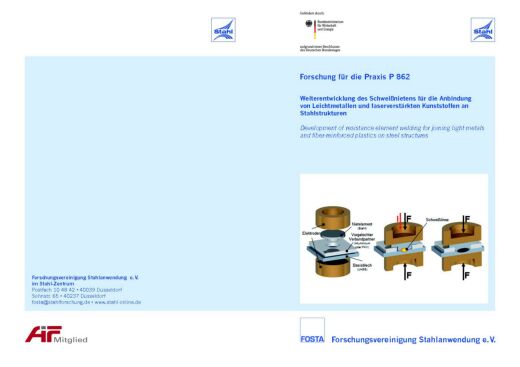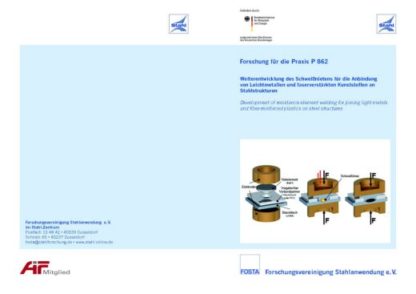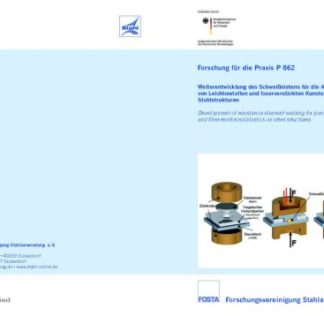Description
P 862 – Development of resistance element welding for joining light metals and fiber-reinforced plastics on steel structures
The introduction of technical innovations in automobile manufacturing for improving durability, driving comfort and occupant protection has resulted in a continuous increase of vehicle mass within the past years. Contrary to that development, recent legislation limits the CO2 emissions of new car models to a certain level, enforced via environmental
protection laws and penalty premiums for emission excess. Besides improved powertrain concepts, significant reductions of vehicle mass are inevitable, if the challenge of reducing CO2 emissions is to be met successfully. The car body is generally the most weight intensive component. The application of intelligent multi-material design is a suitable way of reducing the mass of future car bodies. The idea of multi-material design is a stress-proportionate use of different raw material types in composite constructions.
The materials used for this purpose include primarily high / ultra high strength steels and in second line the metals aluminium or magnesium as well as nonreinforced and fibrereinforced plastics. The affordable implementation of multi-material design depends on the availability of suitable joining methods for such material combinations. In the resistance element welding process an additional element is inserted in the aluminium or fibre-reinforced plastic cover sheet and finally joined with the lower steel sheet by conventional resistance spot welding. The resistance element welding is especially suitable for multi-material joining purposes.
The objective of the research project was the qualification of resistance element welding as a cost effective method for joining light metals and fibre-reinforced plastics with steel materials. To achieve this goal, the relevant parameters for the joining process and the joint characteristics were analyzed and optimizations derived, regarding e.g. the element’s geometrical shape, the process parameters and the process steps. Furthermore, the resistance element welding in combination with adhesive joining was examined and the factors that occur with variation of material combinations investigated as well as process recommendations derived. Based on the results, strength examinations were performed by quasi-static and cyclic load and the results were compared with those of joints made by self-pierce riveting with semi-tubular rivet. Because of the dissimilar materials, increased tendency to corrosion exists and therefore corrosion tests were performed. Finally it could be shown by the investigations that the resistance element welding is especially suitable for joining dissimilar material combinations in the background of multi-material design and the application range of the method is particularly large.
The research project (IGF-Nr. 16586 N) was carried out at Laboratorium für Werkstoff- und Fügetechnik, Universität Paderborn. FOSTA has accompanied the research project work and has organized the project funding from the Federal Ministry of Economics and Technology through the AiF as part of the programme for promoting industrial cooperation research (IGF) in accordance with a resolution of the German parliament.
Only available in german language.
Authors:
O. Hahn, G. Meschut, V. Janzen, F. Flüggen
Published in:
2015




